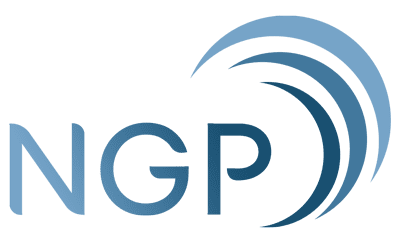What goes on in PR, and why is it so important?
If you’re still here, chances are that you’ve already looked at the pros and cons of PR marketing. Maybe you’ve looked at PR stunt examples and are 100% sure you want a PR campaign, but you still don’t know where (or how) to start.
Or you’ve pitched to PR agencies and media outlets only to get rejected.
Or you’ve had a PR campaign that didn’t quite stick.
Either way, here’s a straightforward guide to building a sensational PR campaign that actually creates an impact, and why a PR (and Integrated Marketing Communication, or IMC) team of experts matters to your brand longevity.
What is a PR Campaign?
Simply put, a PR campaign is a project of marketing tactics with various aims. A successful PR campaign can:
- Increase brand recognition
- Enhance credibility
- Boost website traffic and sales
- Improve brand reputation
And so much more. Whatever the goal, a PR campaign can make or break a company.
Building an Impactful PR Campaign
- Campaign Objectives: Determine What YOU Want to Accomplish
How will more promotion support your (realistic) PR objectives?
Before building your PR campaign, you need to decide what you want your outcome to be:
- More sales and leads? (Should there be 500 new customers within three months?)
- Bigger brand recognition? (Are there fewer people skipping your ads? Do more people recognize your brand at a mall?)
- Or do you just want partner engagement or recruit more people? (Maybe you’re a restaurant wanting a partnership with a delivery service?)
Deciding on your goals will map out your objective, which will then help plot out everything else for your PR strategy. And when setting your PR goals, remember to think about how, concretely, you’ll measure success during your campaign planning.
What does success look like for you?
- More followers?
- More online noise?
- Or simply more brand deals within a year after the campaign?
PR Tip:
- When mapping out your objectives, tie in your brand’s values, too!
Your ideal PR campaign shouldn’t just aim to promote. They should directly align with your brand’s values.
Your business values are also more likely to be picked up by PR agencies. Muck, an international PR solutions firm, found that 62% of PR professionals found the most value in tying up business initiatives with PR initiatives.
- Create a Good PR Brief
A PR brief is a summary of what you want out of your PR team/agency.
It’s also your business overview: the elevator pitch for your company. It should include:
- Your company/brand’s history (where did you start? What are your why’s?)
- Your unique selling proposition (USPs)
- Your market share
- Your core competitors
- Your key achievements
And most importantly:
- Your PR campaign’s target market
The goal of your PR brief isn’t to sell anything. It’s to let your PR agency get a feel of your brand identity so that they know what they can offer you.
PR Tip:
- Most PR agencies will send you a form to fill out detailing the kind of information they need to make an informed decision about working with you. Include as much data as possible! Not only does it help PR agencies piece together what you need, but it also helps them reach out to relevant news outlets, too! In 2023, 37% of journalists worldwide wouldn’t consider covering a product unless some data showed that a brand was solving a problem.
- Localized products/content help a lot, too. While it’s hard to find data for Philippine-based media, a lot of standards adopted by PR agencies and media outlets alike are based on US-based journalistic standards. PR agencies, in particular, depend a lot on market trends–specifically, what consumers look for.
So a snippet of a good brief would look something like this.
Example of a Good PR Brief:
“Aloe Moisture started with our founder’s desire for Filipino-catered skincare that only focused on moisture and sun protection.
Over 10 million Filipinos use our products nationwide. In less than three years since our founding, we have successfully expanded to a wide retail distribution. We sold P10,000,000 worth of lotions last year–P5,000,000 coming directly from our recently launched Aloe Moisture stores.
We want to announce that we’re expanding to Davao, and widening our audience net. While our aloe vera is sourced from Davao, our branding has only been focused on Luzon.”
- Research Stage: Gather Market Intelligence
Good writing is 20% writing, 80% research. PR agencies and journalists shine the most, not through writing, but through research.
After both you and your PR team establish your campaign goals, it’s critical that the early stages of your PR campaign be dedicated to collecting market intelligence and researching more about your brand’s industry.
Through this research stage, you’ll be able to establish:
- What the current media is interested in, and how your campaign’s story can either add to, or disrupt, current marketing trends
- What to polish and what to exclude entirely
- Backup plans for responding to any potential negative feedback.
Research is Collaboration
In the research stage, you might need to collaborate with your marketing and sales team (if you have them). Here are good research methods to get started:
- Competitor Analysis (look for what makes your brand stand out):
- Competitor media campaigns (SEO, Google presence, social media, and PPC)
- Competitors websites
- Digital Media Analysis
- Social Media Analysis
It also helps to research:
- Press releases within your industry
- Journalists to reach out to
- Relevant influencers and/or celebrities for your campaign
- Campaign Focus: What Do You Want Your Audience to Feel?
During your research stage, you should be able to have a campaign focus where you highlight:
- What your campaign product is (YouTube ad? Billboard? YouTube ad about your Billboard?)
- Who your campaign audience is (Want to cater to an older demographic instead?)
From there, you have to decide on emotions. What, exactly, do you want your campaign audience to feel? Empowered? Enlightened? Hungry?
This is especially important because, culturally, Filipinos love to build deep, personal relationships. So much so that even ‘thank you’ cards are considered a huge campaign focus.
Example of a Good Campaign Focus:
During the pandemic, Jollibee created an incredibly emotional ad that highlighted the Filipino family’s desire to connect.
It played less like an ad and more like a short film: and it worked! The comments are full of praise for the story.
Rather than just promoting their food, Jollibee focused on how their food connects people. And this has been behind their success in recent years.
Best Leave it to the Experts
Long story short, a LOT goes into a PR campaign.
This is why partnering with a PR and IMC agency of experts is the best route: everything laid out in this article should be someone else’s focus, while yours is making sure your products or services flourish enough to be advertised.
The IMC aspect is there to make it seamless across multiple channels: TV, radio, and online. For markets competing to be everywhere, IMC is a huge need, and a huge commitment.
Let’s lay out the foundations of your PR campaign together! With NGP IMC’s portfolio of experiences across the nation’s largest brands and media networks, there is no challenge too great or small for us.

Kriztin Cruz is a recruitment and digital marketing professional, freelance writer, hobbyist painter, and frustrated sociologist–with too many things to want and too little time to spare. She graduated with a Psychology degree in 2019 at De La Salle – College of Saint Benilde Antipolo. When she’s not drafting a corporate letter or working on anything digital marketing, you can find her doing the following, but not in this order: reading a good book, scavenging for a good book, sketching, painting, journaling, junk journaling, obsessing over an obscure Czechoslovakian surrealist film (or anything by Miyazaki or Del Toro), cooking, finding a cafe to relax in, and creating new things while a nice documentary plays in the background.


